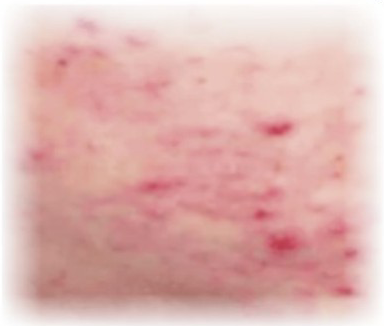



This is an important anatomic distinction because of the type of cells that line the hemorrhoid, and the nerves that provide sensation.
Internal hemorrhoids are located above the pectinate line and are covered with cells that are the same as those that line the rest of the intestines. External hemorrhoids arise below the line and are covered with cells that resemble skin.
Hemorrhoids become an issue only when they begin to swell, causing itching, pain and/or bleeding.
What causes hemorrhoids?
Comment on this Share Your Story
While the presence of hemorrhoids is a reflection of the normal anatomy, most people and care professionals refer to hemorrhoids as an abnormal finding because they only present when they swell and cause problems.
Hemorrhoid swelling occurs when there is an increase in the pressure in the small vessels that make up the hemorrhoid causing them to swell and engorge with blood. This causes them to increase in size leading to symptoms. Increased pressure may be caused by a variety of factors:
What does a hemorrhoid look like?
Normal hemorrhoidal tissue cannot be seen since they must first swell and become inflamed or develop a clot to cause symptoms. One can see swollen external hemorrhoids or prolapsed internal hemorrhoids exposed outside the anus but internal hemorrhoids cannot be seen because they remain inside the anus. A thrombosed hemorrhoid will appear as a lump at the anal verge, protruding from the anus and will be dark bluish in color because of the blood clot contained inside the swollen blood vessel. A non-thrombosed hemorrhoid will appear as a rubbery lump. Often more than one swollen hemorrhoid appears at the same time.
How is the diagnosis of hemorrhoids made?
The common symptoms of a hemorrhoid include itching, pain, rectal fullness or lump, and bleeding. The diagnosis is made by history taking and physical examination. The history may focus on the associated symptoms including constipation, hard bowel movements, and straining while going to the toilet. Other questions may be asked to look for other causes of rectal bleeding including tumors, inflammatory bowel disease, and gastrointestinal bleeding.
Physical examination is performed to confirm the diagnosis and includes a rectal examination where a finger is used to feel for abnormal lumps or masses. Interestingly, internal hemorrhoids cannot usually be felt. The rectal exam may be deferred if there is intense pain or swelling. In addition, hemorrhoids and constipation may be associated with anal fissures or cracks in the skin surrounding the anus. The associated pain and spasm makes a rectal exam very uncomfortable.
If the health care professional is concerned that the symptoms, especially rectal bleeding, cannot be explained by hemorrhoids, anoscopy may be considered. Anoscopy is an office procedure where a lighted tube is inserted to look at the anus. Sigmoidoscopy or colonoscopy may be ordered if there is concern that the bleeding is arising from other areas of the colon. These procedures are usually performed by a gastroenterologist or surgeon.
Depending upon the situation, blood tests may be ordered. If there has been excessive bleeding, the hemoglobin or red blood cell count may be checked. If the patient is taking warfarin (Coumadin), an INR (international normalized ratio) or PT (protime) may be ordered to check for appropriate blood "thinning". Please note that there are many newer anticoagulation medications available to "thin" the blood and their activity cannot be measured by routine blood tests.